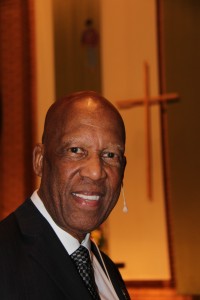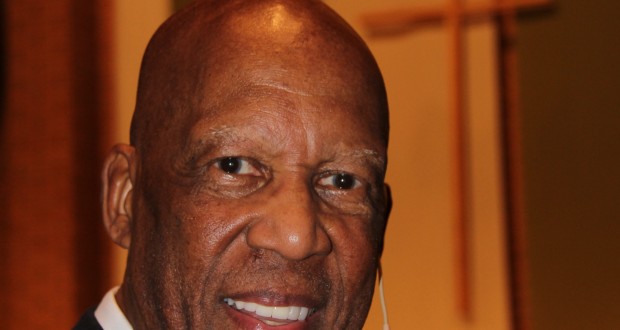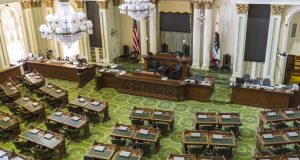
Terrence Roberts, PhD, Keynote Speaker, Race & Racism, Redlands 1st United Methodist Church. (Photo credit: John Coleman/Community Photographer)
By John Coleman
REDLANDS, CA- United Methodist Church in Redlands led an interesting discussion on Race in America, which was held on Wednesday, November 8. Terrence Roberts led the discussion with a presentation about his early childhood years as a Black child growing up in America. He recalled being scarcely aware of the hurtful attitudes and behaviors of White people towards Black people. He felt safe within this home where he ran and played and enjoyed the joys that childhood had to offer. Early on as a child he was taught to be good, develop a strong internal sense of himself, and to get a good education.
However, outside of the home it was a different story. Roberts became aware of difficulties for Black people surviving in in a racist, legally structured system and in state like Mississippi or Arkansas, where laws are written by White people for enforcement on Blacks, such as the 1896 U.S. Supreme Court decision, known as “Separate but Equal,” while only a few men who wrote the U.S. Constitution were slave holders, all firmly believed in the superiority of European people over all others. This all began almost from the earliest years of the European invasions of the America more than 330 years ago.
Dr. Roberts proceeded to note post WWII changes in society that began to affect or address concepts of race or racism in the structure of life in America.
In his school years, Roberts began attending the public schools of Little Rock, Arkansas, which under Arkansas laws required Black students to attend public schools that were separate from, but failing to be equal to public schools attended by white students. This situation was well recognized and sometimes contested by Black people in Arkansas. White parents and their children were less aware, concerned, or opposed.
In 1954, The U.S. Supreme Court reversed the 1896 “Plessy v Fergusson” (Separate But Equal) Decision, with the “Brown v. Topeka Board of Education” Decision & ruled that separation (segregation) was inherently unequal, and thus in violation of the US Constitution. White parents, students, school officials, community leaders, and white society-at-large were outraged and organized opposition efforts.
Black students in still segregated Arkansas public schools organized and attempted to enroll in Little Rock High School. Over 300 teen-agers volunteered to participate, but only nine (9) were selected.
Arkansas Governor, Orval Faubus ordered the Arkansas National Guard to prevent the students from their attending LRHS, but U.S. President Eisenhower nationalized the Guard and ordered them & USArmy soldiers to protect the students’ constitutional rights. A soldier was assigned to protect each student, day and night, but abuse and mistreatment continued all year.
Terrence Roberts, then 13-years-old, was among the selected students who became known as the “Little Rock Nine.” They were confronted by hostile, and violent crowds before and after school all year and behind the scenes in-school hostility and abuse from white students also persisted. However, Roberts commended quiet support and aid from White heroes, students and teachers, who were targeted, threatened and abused if they appeared to encourage and/or support the “Little Rock Nine.” He specially appreciated the white student who defying white hysteria shared her textbooks, notes, and other class materials with him after his were ripped from him and destroyed.
Parents lost their jobs. They and many others in the Black community suffered injury and other loss. Many others who carried the de-segregation campaign across America, like the “Little Rock Nine,” were teenage youth and their parents.
Governor Faubus cancelled all Arkansas high schools for the 1958-59 school year.
Terrence Roberts’ family moved to California where he completed high school, earned a BA from Cal State University, LA; a Masters in Social Work from USC, and his PhD from Southern Illinois University. (This “Boy” really ‘got’ his education!)
 Westside Story Newspaper – Online The News of The Empire – Sharing the Quest for Excellence
Westside Story Newspaper – Online The News of The Empire – Sharing the Quest for Excellence




